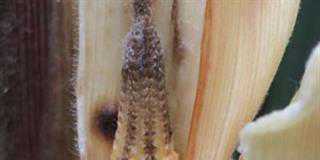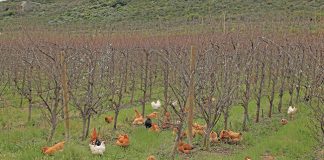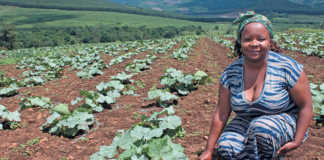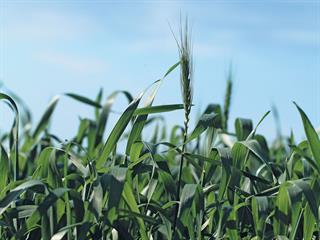
Five years ago, when his father handed him the reins to Tolange Farm near Riversdale in the Western Cape, 26-year- old Andrew Jonker realised the operation would remain economically viable only if he used conservation farming principles in combination with precision farming.
“The farm hadn’t been farmed intensively for years, so there was a lot of room for improvement,” says Andrew.
His father kept a few cattle and planted about 50ha of wheat each year.
“While this wasn’t ideal, the advantage was that there wasn’t any pressure on me to do things in a specific way, as is usually the case when young men start to farm.”
Conservation farming is aimed at conserving soil and water resources, and uses a number of techniques: crop rotation, minimum tillage, retaining of soil residues, and strategic grazing. It is the key to most farmers’ survival in the Southern Cape, as it reduces climate risk by enhancing the moisture-holding capacity of the soil, says Andrew.
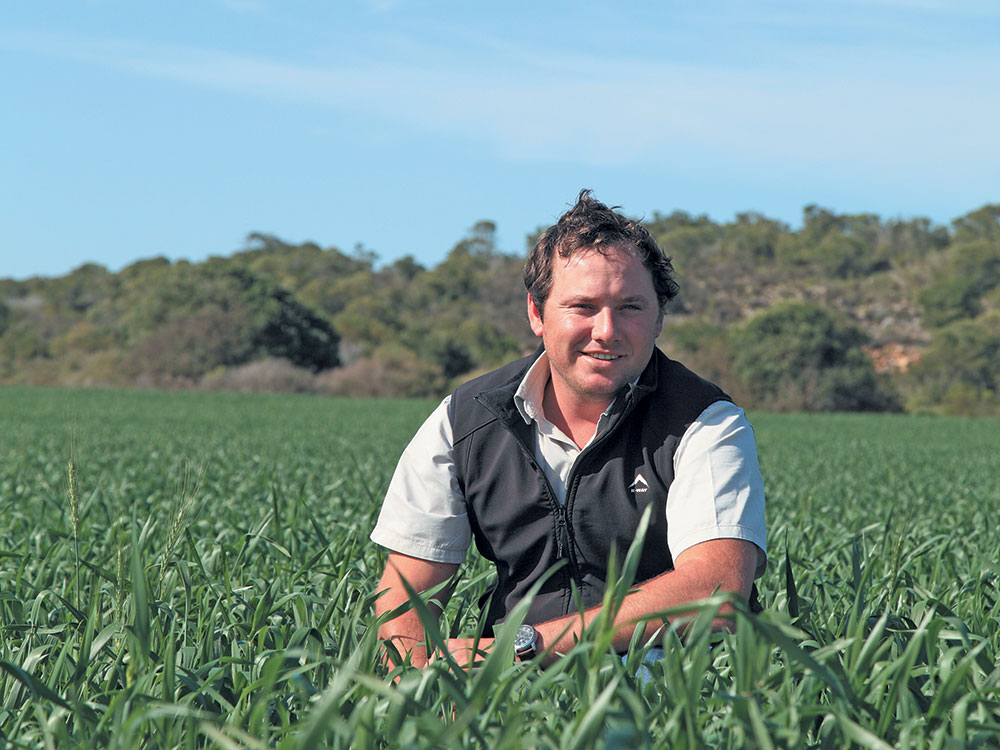
When Andrew Jonker started farming five years ago, the farm was fairly neglected.
Production consisted of a monoculture of wheat.
“With conservation farming, the soil becomes like a sponge, resulting in crops being less vulnerable to dry spells and flooding than soils that contain less organic material. I don’t think I would have been able to farm wheat here if it weren’t for these benefits, because our weather is extremely erratic.”
Crop rotation
Andrew has 700ha planted to grain, with the area under production divided into two sections. The first has high-quality soil, and a crop rotation programme where wheat is grown for two years, barley for one year, and canola for one year. If weeds become a problem, the cycle is broken by initiating a four-year-long lucerne cycle.
“We don’t really have problems with herbicide resistance, but when it looks as if there might be something, I’ll take [the crop] out of the rotation to ensure we get rid of the problem,” explains Andrew.
The second section consists of lower-quality soils. In this rotation programme, wheat is grown for a year, followed by one year of barley, followed by four years of lucerne.
Canola brings several advantages to the rotation programme, says Andrew. Most importantly, it loosens the soil with its tap roots and helps break disease cycles, allowing farmers to use grass herbicides they would have been unable to use during the wheat cycle.
Andrew plans on planting soya beans as a summer mulch this year, after harvesting the canola; this will help to replace nitrogen in the soil before the wheat rotation is started again.
Grazing animals
He would also have liked to use soya beans as a graze, but thinks this might not be possible as the season has been delayed by about 10 days this year due to climatic conditions.
All crop residues are left on the soil after the harvest to serve as mulch. Sheep are allowed to graze the stubble for a couple of weeks just after harvest, depending on the size of the flock and the condition of the land.
The farm has a total of 2 500 Merino ewes and 3 500 sheep, as well as 100 Bonsmaras that graze the veld.
“There are farmers who think you shouldn’t allow any animals on conservation-farmed grain lands, if you want to get the full benefits of the system,” says Andrew. “While this might be true, a farmer has to be realistic and do what makes financial sense. To me, the sheep add value to production, while diversifying market risk. When grain prices are low, the sheep can pull me through.”
Minimum-till is used to plant seed. Andrew says that the crop residues become too thick to allow no tillage. He uses a slasher behind his harvester to break up plant material so that it will decompose faster.
Conservation farming on its own, however, is no longer enough to secure the profitability of a farm. To remain profitable, farmers must find ways to reduce wastage and improve efficiencies.
Precision farming
“Precision farming equipment does this,” says Andrew. “It allows farmers to move from blanket fertilisation to applying only the fertiliser required for a specific area. It also allows farmers to compare harvest information and identify poor spots in lands, so they can investigate why these are not producing up to standard.”
He was convinced of the wonders of precision farming the year before he started farming, when he worked for eight months on a grain farm in Tennessee.
“While I worked in the US, we planted over 13 000ha of grain. The owner of the farm used GPS, which helps to reduce compaction by allowing equipment to move over the same track each time on a specific land.
“The technology also enables the self-steering of tractors and harvesters, differential fertilisation and the monitoring of production while crops are being harvested. This allows you to see exactly how much wheat you’ve harvested from specific areas in the land.”
Switching to precision farming did not happen overnight, as the technology is expensive. Andrew recalls that he “almost had a heart attack” when he saw the price of his first GPS system.
“The system wasn’t very smart. It only helped to track the movement of a tractor – and that at a cost of R18 000.”
Today, he takes these costs in his stride and has recently purchased three new GPS systems, a Topcon and two Trimbles. Andrew explains that he bought the Trimbles because he was familiar with the technology. The Topcon, however, is better suited for his Massey Ferguson tractor: it has a ‘plug and play’ design and requires no additional wirings.
Subdividing lands – and saving
Each system cost him about R200 000, but Andrew stresses that one has to spend money to make money.
He is in the process of subdividing his lands into 1ha grids. Soil sampling results will then be used to determine, with the help of the GPS technology, the volume of fertiliser that should be applied to each hectare. It has so far been used to spread lime, substantially reducing the farm’s lime bill.
Andrew estimates that overlap spraying alone could be reduced by at least 7% with the help of GPS and auto-steering. This would mean savings on pesticides alone of least R50 000, considering that he has to carry out six sprays on his 700ha under grain production each year.
There will also be considerable savings on running costs. Currently, the tractor is doing 49ha too much with each application, resulting in a total of 294ha for all six applications. At a running cost of R120/ha, the auto-steering will therefore bring about a saving of about R38 000.
Eye in the sky, and soon on the ground
Andrew’s newest technical gadget is a DJI Phantom 3 unmanned aerial vehicle (UAV or drone), which he uses to monitor the farm. He flies it over his land to examine progress and identify problems and crop damage. When it flies low over the crop, the downwash blows the leaves open, allowing Andrew to investigate the crop more closely on his smartphone screen. If he sees anything irregular, he will walk to the spot and physically examine the problem.
The next items on his wish list are cameras that he can mount on the farming equipment, so that he can monitor what is happening to the equipment and the land while the equipment is in operation. He would also need to find a way to link the information from the cameras to an app on his phone.
The idea behind this is to identify whether there is something wrong with the equipment.
“It would enable me to see what the driver is seeing and to see what’s going on outside, while I’m sitting at the office, at meetings or even on holiday,” says Andrew.
Email Andrew Jonker at [email protected].











